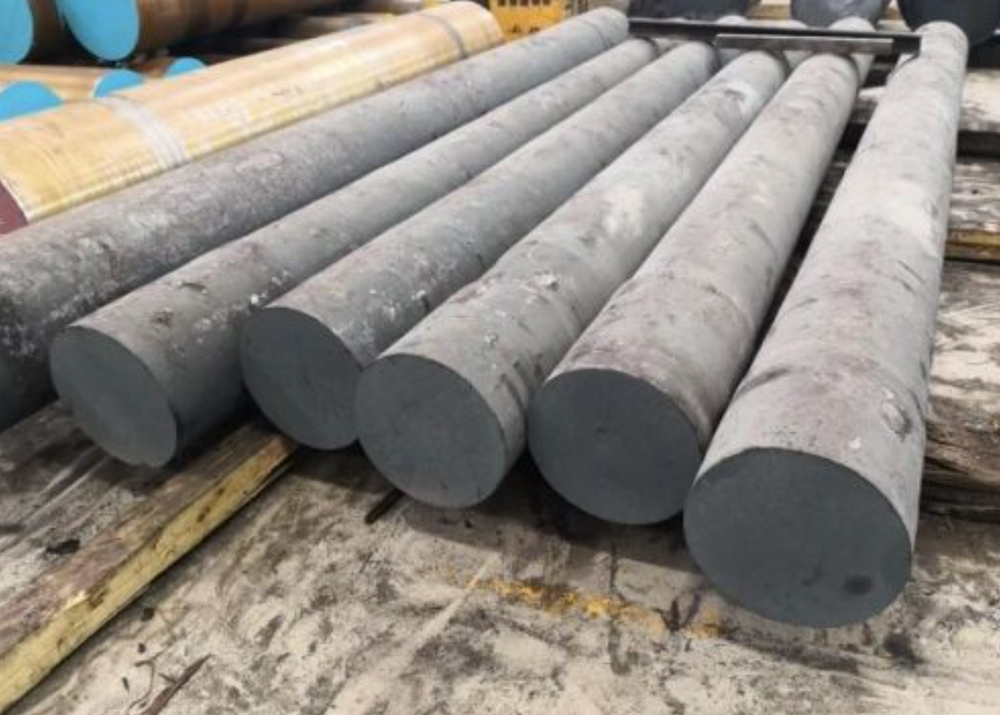Chemical Composition
|
Weight % |
C |
Si |
Mn |
Cr |
Mo |
Ni |
V |
S |
P |
|
Min. |
0,28 |
0,20 |
0,75 |
0,70 |
0,35 |
1,65 |
0,05 |
|
|
|
Max. |
0,33 |
0,35 |
1,00 |
0,95 |
0,50 |
2.00 |
0,10 |
0,025 |
0,025 |
Mechanical Properties: Bar
|
|
Yield
strength Rp0.2, |
Tensile
strength Rm, |
Elongation |
Hardness |
Impact,
Charpy-V, -20ºC |
|
Min. (150 ksi) |
1034 |
1138 |
15 |
341-388 |
32 |
Heat Treatment
Heat
treatment temperatures, including rate of heating, cooling and soaking times
will vary due to factors such as the shape and size of each steel component.
Other considerations during the heat treatment process include the type of
furnace, quenching medium and work piece transfer facilities.
Annealing
Heat
the steel slowly to 820-860°C and allow enough time for the steel to be
thoroughly heated. Cool slowly in the furnace to 580°C followed by air cooling.
Stress Relieving
When parts are heavily machined, ground or otherwise
subject to cold work, stress relieving will be beneficial prior to hardening.
Hardening
4330V steel is usually supplied ready heat treated to
35-39 HRc. If further heat treatment is required annealed 4330V should be
heated slowly to 840-875°C and after adequate soaking at this temperature
quench in oil. Temper as soon as the tools reach room temperature.
Tempering
Heat
carefully to a suitable temperature selected by reference to a tempering chart
or table, soak at the temperature for 2 hours per 25mm of ruling section, then
allow to cool in air.
Applications
The comparatively low carbon content of the alloy makes it
particularly useful in applications involving shock loading or stress
concentration. It features strength and high resistance to crack propagation
and exceptional low temperature impact properties. Typical applications of 4330V
Mod are for high strength, aerospace, and power generator defense. 4330V Mod
steel is primarily used in the oil industry for oil tools and drill jars.



